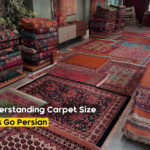
Carpet Sizes: Finding the Perfect Size for Your Space
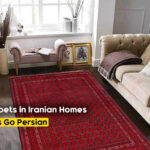
The Cultural Significance of Carpets in Iranian Homes
One of the most defining characteristics of Persian carpets is the intricate knotting technique used to create their stunning patterns and durable structures. The art of knotting dates back thousands of years and has been passed down through generations of skilled artisans. Different regions in Persia (modern-day Iran) have developed their unique knotting styles, each contributing to the beauty and craftsmanship of these prized carpets. In this guide, we will explore the main knotting techniques used in Persian carpets, explain how these knots impact the carpet’s quality and design, and provide insight into why Persian carpets are considered masterpieces of textile art.
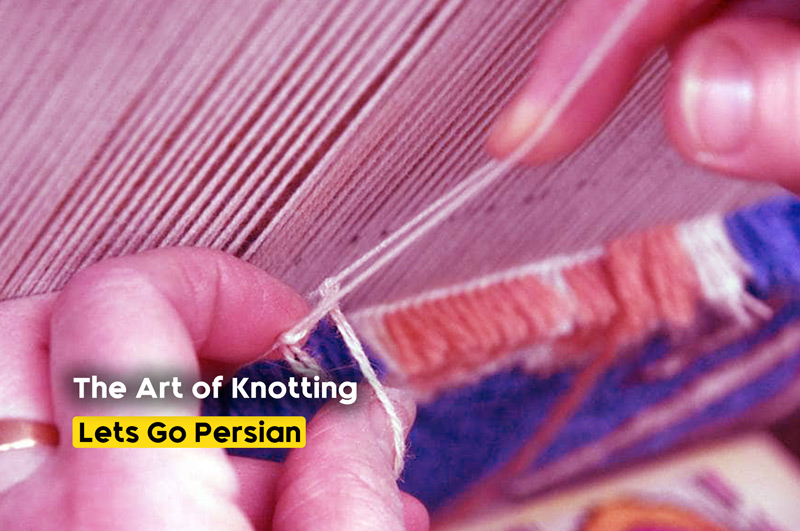
The Art of Knotting Techniques Used in Persian Carpets
1. The Importance of Knotting in Persian Carpets
What is Knotting?
In carpet weaving, knots are tied around the vertical warp threads that form the foundation of the carpet. Each knot is a tiny, labor-intensive action that, when repeated thousands or even millions of times, creates the intricate designs and motifs characteristic of Persian carpets. The number of knots per square inch (KPSI) is a critical factor in determining the carpet’s quality, durability, and level of detail.
- Higher Knot Density: The more knots per square inch, the finer and more detailed the design of the carpet will be. High-knot-density carpets take much longer to create but result in highly intricate and detailed patterns.
- Lower Knot Density: Carpets with fewer knots per square inch are often bolder in design, with larger, more geometric patterns. These carpets may have a more rustic or tribal feel.
2. The Two Primary Knotting Techniques in Persian Carpets
There are two main types of knots used in Persian carpets: the Persian knot (asymmetrical) and the Turkish knot (symmetrical). These knots are named after the regions where they are traditionally used, though both techniques can be found in various Persian carpets.
1. Persian Knot (Asymmetrical Knot)
Overview
The Persian knot, also known as the Senneh knot, is an asymmetrical knot that allows for finer, more intricate designs. This type of knot is more common in the central and southern regions of Iran and is used in some of the most famous Persian carpet-weaving centers such as Isfahan, Kashan, and Tabriz.
- Structure: In a Persian knot, the thread is looped around one warp thread and then passed under the adjacent warp thread, leaving one side of the knot open. This asymmetry allows for a tighter, denser weave, resulting in more detailed and refined patterns.
Benefits of the Persian Knot
- Finer Designs: The open side of the Persian knot allows for a higher knot density, which enables weavers to create more detailed and intricate designs, including delicate floral patterns and curvilinear motifs.
- Versatility: The Persian knot is highly versatile and can be used to create both complex, curvilinear patterns and more straightforward geometric designs.
Regions Using the Persian Knot
- Isfahan: Isfahan carpets are known for their incredibly fine weave and intricate floral patterns, often featuring central medallions and dense floral borders. The Persian knot is essential to achieving these detailed designs.
- Tabriz: Carpets from Tabriz often feature a high knot density, with the Persian knot allowing for detailed representations of historical scenes, gardens, and medallions.
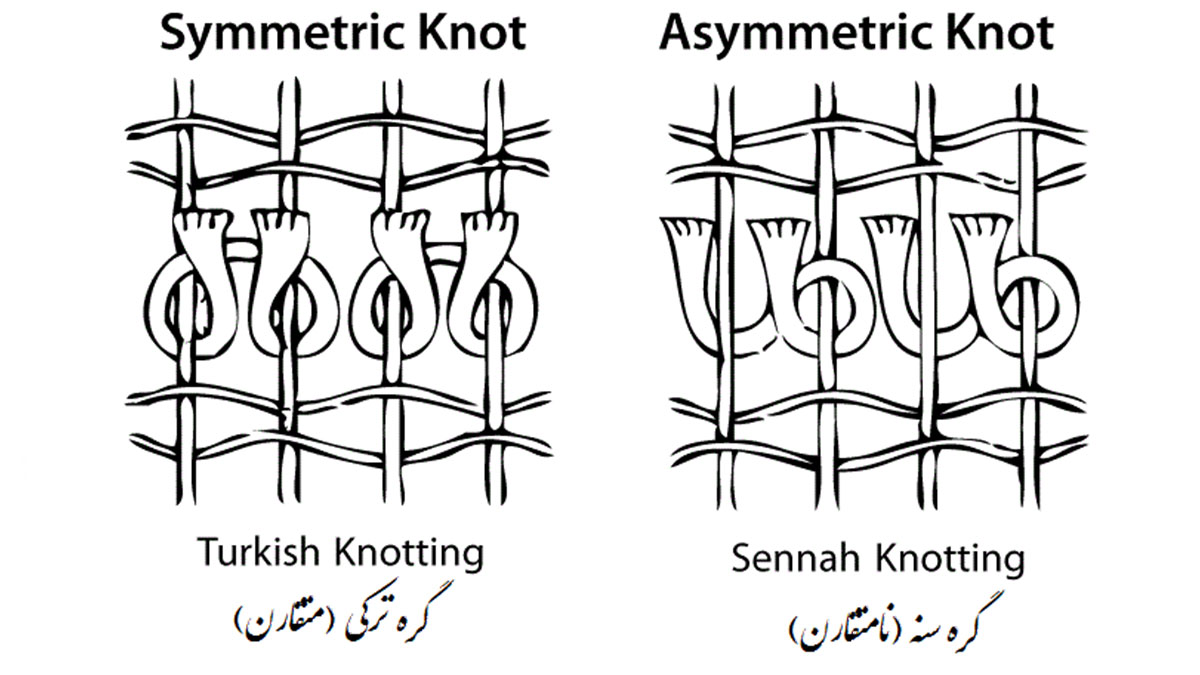
Knotting Techniques
2. Turkish Knot (Symmetrical Knot)
Overview
The Turkish knot, also known as the Ghiordes knot, is a symmetrical knot traditionally used in northern Iran, particularly in Tabriz and Kurdish regions. This knot creates a more durable and sturdy structure, which makes carpets woven with Turkish knots especially long-lasting.
- Structure: In the Turkish knot, the yarn is passed around two warp threads and tied symmetrically. This produces a more uniform knot, with both ends of the knot appearing on the surface of the carpet.
Benefits of the Turkish Knot
- Durability: Carpets made with Turkish knots are more durable and resilient, making them ideal for high-traffic areas. The symmetrical knot provides added strength to the carpet’s structure.
- Geometric Designs: The Turkish knot is particularly well-suited to creating bold, geometric designs. Many tribal and nomadic carpets feature these patterns, which are a hallmark of the symmetrical knot.
Regions Using the Turkish Knot
- Tabriz: While Tabriz weavers often use the Persian knot for finer carpets, the Turkish knot is also commonly used, particularly in carpets that feature bolder designs or are intended for everyday use.
- Kurdish Carpets: Kurdish weavers frequently use the Turkish knot to create durable, geometric designs that reflect their tribal traditions. These carpets often feature bold colors and patterns with significant symbolic meaning.
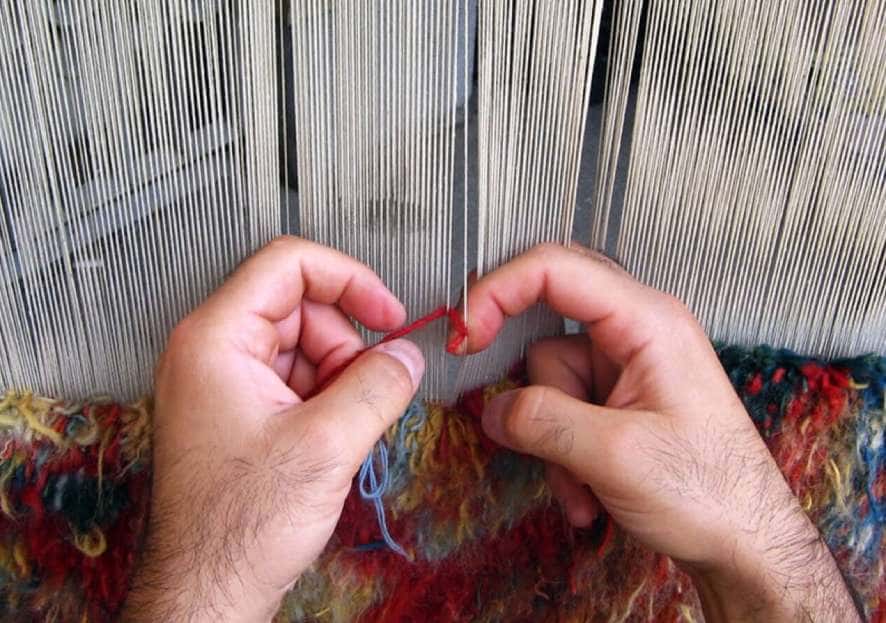
The Art of Knotting
3. Knot Density and Its Impact on Carpet Quality
What is Knot Density?
Knot density, typically measured as knots per square inch (KPSI), is one of the primary indicators of a Persian carpet’s quality. Knot density affects the level of detail that can be achieved in a design and influences the durability of the carpet.
- Low Knot Density: Carpets with a knot density of around 30 to 80 KPSI tend to have larger, bolder designs, often with a more tribal or rustic aesthetic. These carpets are usually quicker to produce and may have a softer texture.
- Medium Knot Density: Carpets with a knot density of 80 to 150 KPSI offer a good balance between durability and design detail. This range is common in many Persian carpets, providing clear patterns without taking too long to produce.
- High Knot Density: Carpets with a knot density of 200 to 500+ KPSI are considered high-quality luxury pieces. These carpets allow for incredibly detailed and intricate designs, including curvilinear patterns, floral motifs, and fine detailing. They are more labor-intensive and time-consuming to produce, resulting in higher prices.
Examples of Knot Density in Persian Carpets
- Isfahan Carpets: Known for their extremely high knot density (often exceeding 300 KPSI), Isfahan carpets feature intricate designs, with detailed floral patterns and central medallions.
- Kashan Carpets: Kashan carpets typically have a medium to high knot density, often ranging from 120 to 300 KPSI, allowing for both intricate and bold designs.
- Tribal Carpets (Qashqai, Baluch): These carpets usually feature a lower knot density (between 50 and 100 KPSI), which gives them a more rustic, geometric appearance.
4. Additional Knotting Techniques in Persian Carpets
Jufti Knot
The Jufti knot is a less common knotting technique sometimes used in regions like Khorasan. Unlike the Persian or Turkish knots, the Jufti knot involves tying the yarn around four warp threads instead of two. This allows weavers to work faster, producing carpets more quickly.
- Benefits: The Jufti knot is faster to weave, making it more economical to produce larger carpets in less time.
- Drawbacks: Carpets made with Jufti knots are generally less durable and have a lower knot density, meaning they cannot achieve the same level of detail as carpets woven with Persian or Turkish knots.
Double Knotting
Some weavers use a double knotting technique to reinforce areas of a carpet that receive the most wear, such as the edges or borders. This practice adds strength and durability to the carpet, ensuring it lasts longer even in high-traffic areas.
5. How Knotting Influences Design and Value
The knotting technique and density used in a Persian carpet not only influence its durability and texture but also its value. Carpets with higher knot densities and finer designs are more valuable due to the increased time and skill required to produce them. In contrast, carpets with lower knot densities are often more affordable and feature simpler, bolder designs.
- Luxury Carpets: Carpets from regions like Isfahan, Nain, and Tabriz, which feature high knot densities and intricate designs, are highly valued and often considered luxury items.
- Tribal Carpets: Carpets from nomadic tribes, such as the Qashqai or Baluch, often feature lower knot densities but are prized for their cultural significance, bold patterns, and durability.
Conclusion
The art of knotting is at the heart of Persian carpet-making, and the type of knot used, along with the knot density, significantly affects the carpet’s quality, design, and value. From the fine, detailed Persian knots to the sturdy and durable Turkish knots, each technique contributes to the unique beauty and craftsmanship of Persian carpets. Whether you’re drawn to the intricate designs of high-knot-density carpets or the bold, geometric patterns of tribal weaves, understanding these knotting techniques allows you to better appreciate the skill and artistry behind every Persian carpet.



















